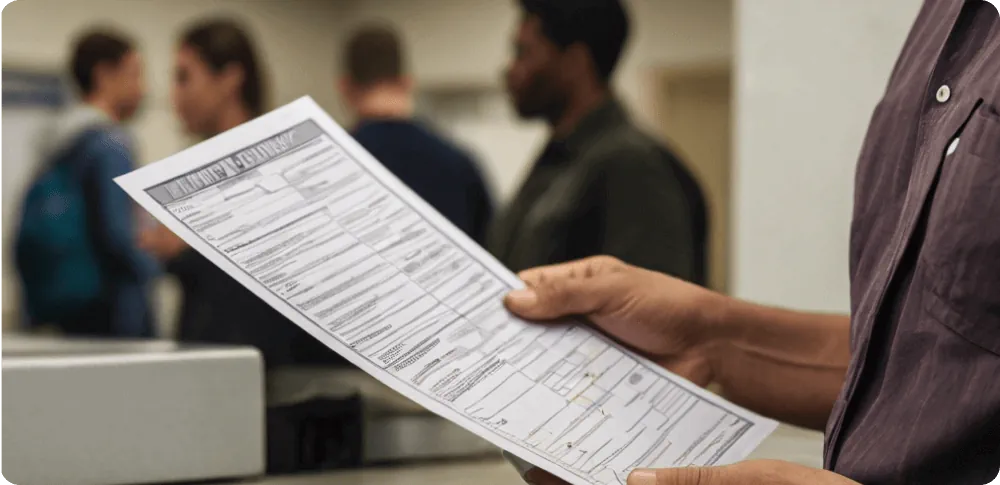California Residency Document Requirements for CLP Application
01/25/2025
Guides

If you’ve never held a commercial driver’s license (CDL) or wish to make changes such as adding a classification, endorsement, or restriction that requires a skills test, obtaining a Commercial Learner’s Permit (CLP) is the first step. Here is a comprehensive guide to help you through the process in California.
CLP Requirements
To apply for a CLP, you must meet specific eligibility requirements, including holding the permit for at least 14 days before taking the skills test. Additionally, you must present acceptable residency documents if you have never had a California driver’s license (DL) or identification card (ID).
Acceptable Residency Documents
The California Department of Motor Vehicles (DMV) mandates presenting a residency document when applying. This document must include your first and last name and a California mailing address that matches the address listed on your driver license application.
Here’s a list of acceptable residency documents:
Rental/lease agreement: Must include signatures of the owner/landlord and tenant/resident.
Deed/title to residential property.
Mortgage bill.
Home utility bill: Includes cellular phone bills.
School documents: Must be issued by a U.S. educational institution. Foreign documents must be sealed and include a photograph of the applicant at the issuance age.
Medical documents.
Employment documents.
Faith-based documents: Must include the issuing organization’s name and address.
Insurance documents: Includes medical, dental, vision, life, home, rental, and vehicle insurance.
Tax returns: Internal Revenue Service (IRS) or California Franchise Tax Board (FTB) returns.
Official government documents: Must include agency name, department name, state seal, or official letterhead.
California vehicle/vessel Certificate of Title or registration.
Change of address confirmation: U.S. Postal Service Form CNL107.
California property tax bill or statement.
Financial records: From state or national banks, credit unions, or credit card issuers.
Court documents: Must list the applicant as a California resident.
Shelter or nonprofit letters: Letters on letterhead from homeless shelters, employers, or faith-based organizations attesting to residency.
Voter registration confirmation: Issued by the California Secretary of State or local elections officer.
Proof of resident tuition: Issued by a California public institution of higher education.
Homeowners’ property tax exemption claim: Approved BOE-266 form filed with a local California County Assessor.
No-Fee Identification Card Eligibility Verification: DL 933 form.
Additional Information for Residency Documentation
If documents addressed to you are unavailable, you may use a tracing document (e.g., birth certificate, marriage license, or domestic partner registration) to prove your relationship to the individual named on the residency document. Ensure the names match. If not, additional documentation, such as a marriage or divorce certificate, will be required.
Special Cases
Minors in foster care may use specific forms issued by the California Department of Social Services, such as:
Agency – Group Home Agreement (Form SOC 154).
Placement Agency – Foster Family Agency Agreement (Form SOC 154A).
Agency – Foster Parents Agreement (Form SOC 156).
Why Residency Proof Matters
The residency documents ensure compliance with California laws, verify identity, and confirm the applicant’s state of residence. Submitting incorrect or incomplete documentation can delay your application process.
Conclusion
Obtaining a CLP is a critical step toward acquiring a CDL in California. By ensuring you provide all required residency documents and adhere to DMV guidelines, you can smoothly navigate the application process. Always double-check your documents and seek clarification from the DMV if needed.
